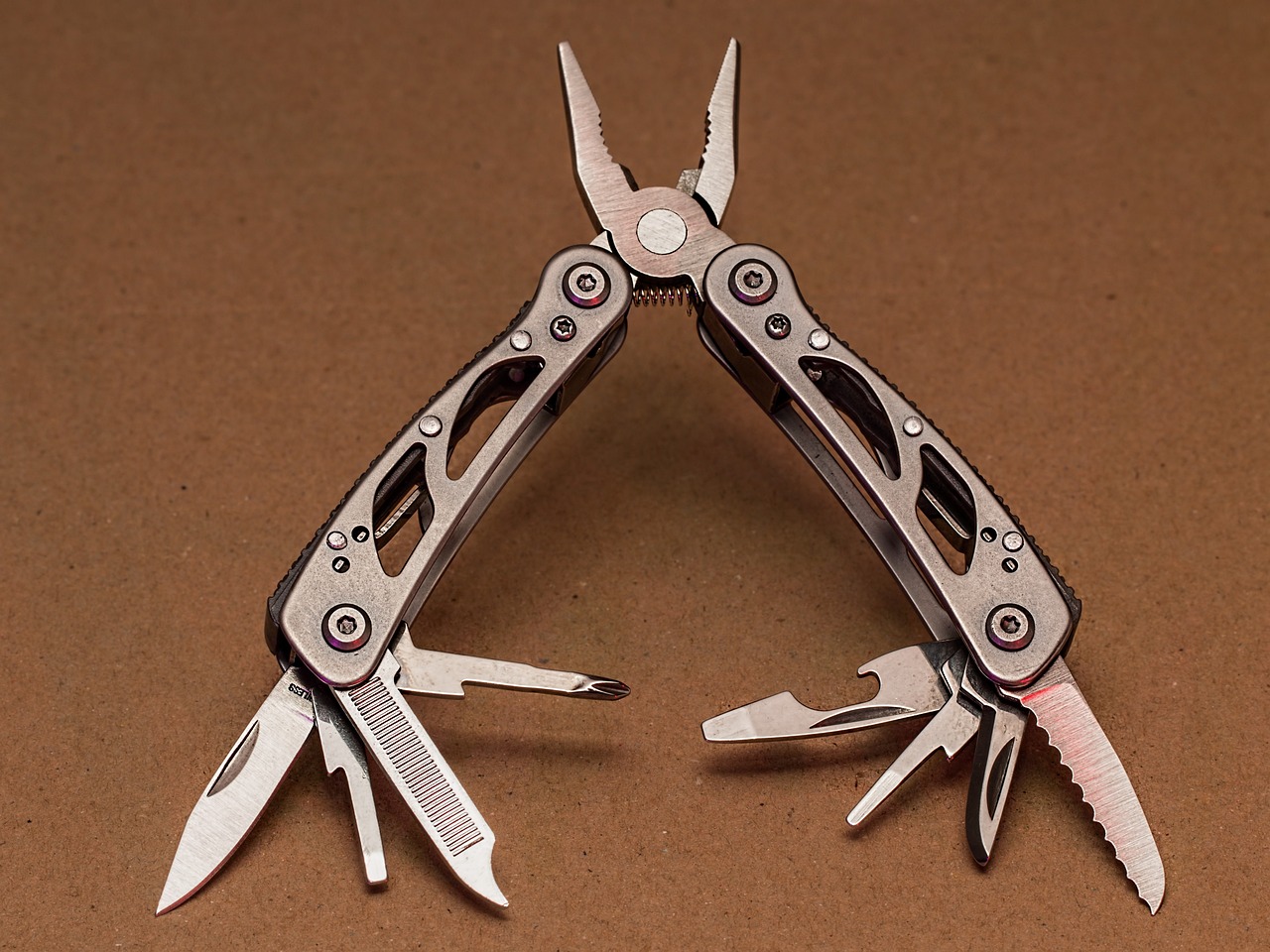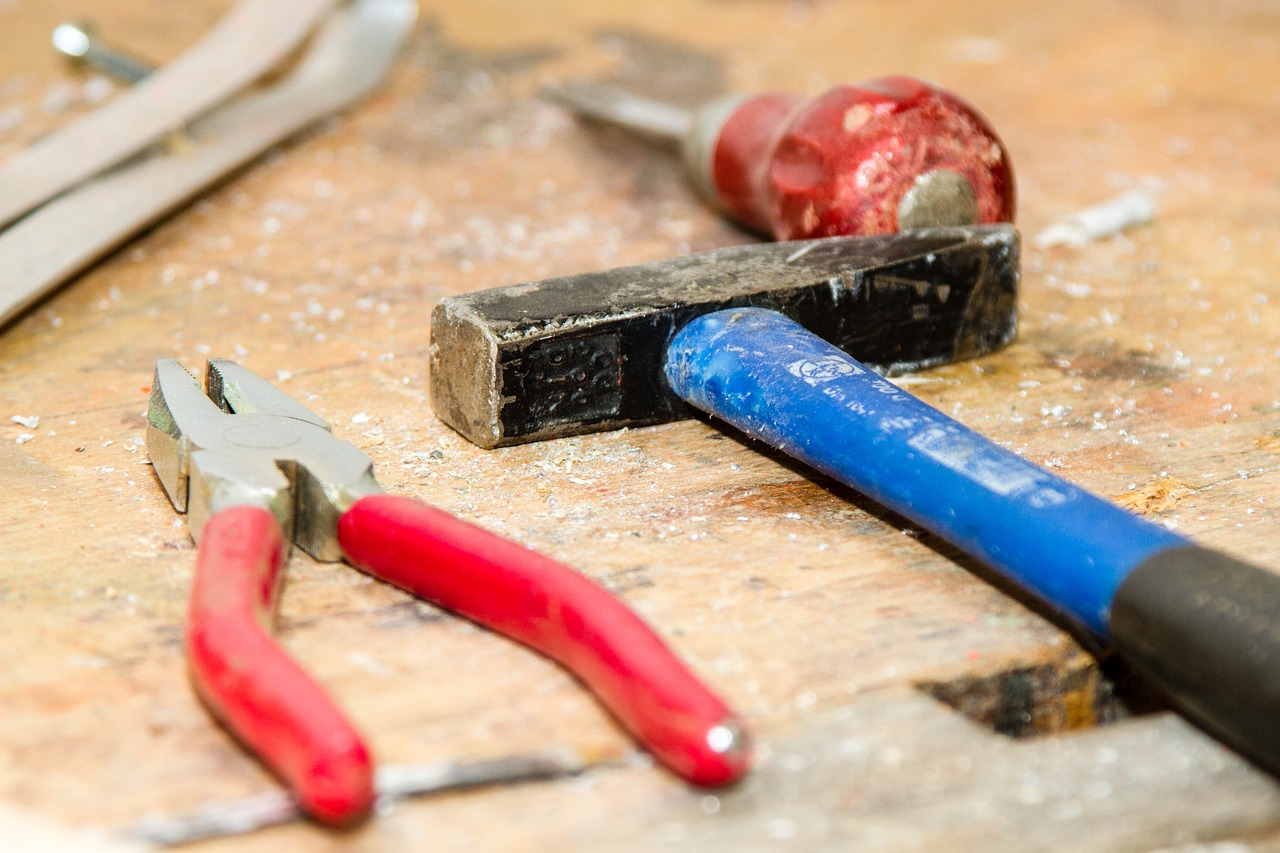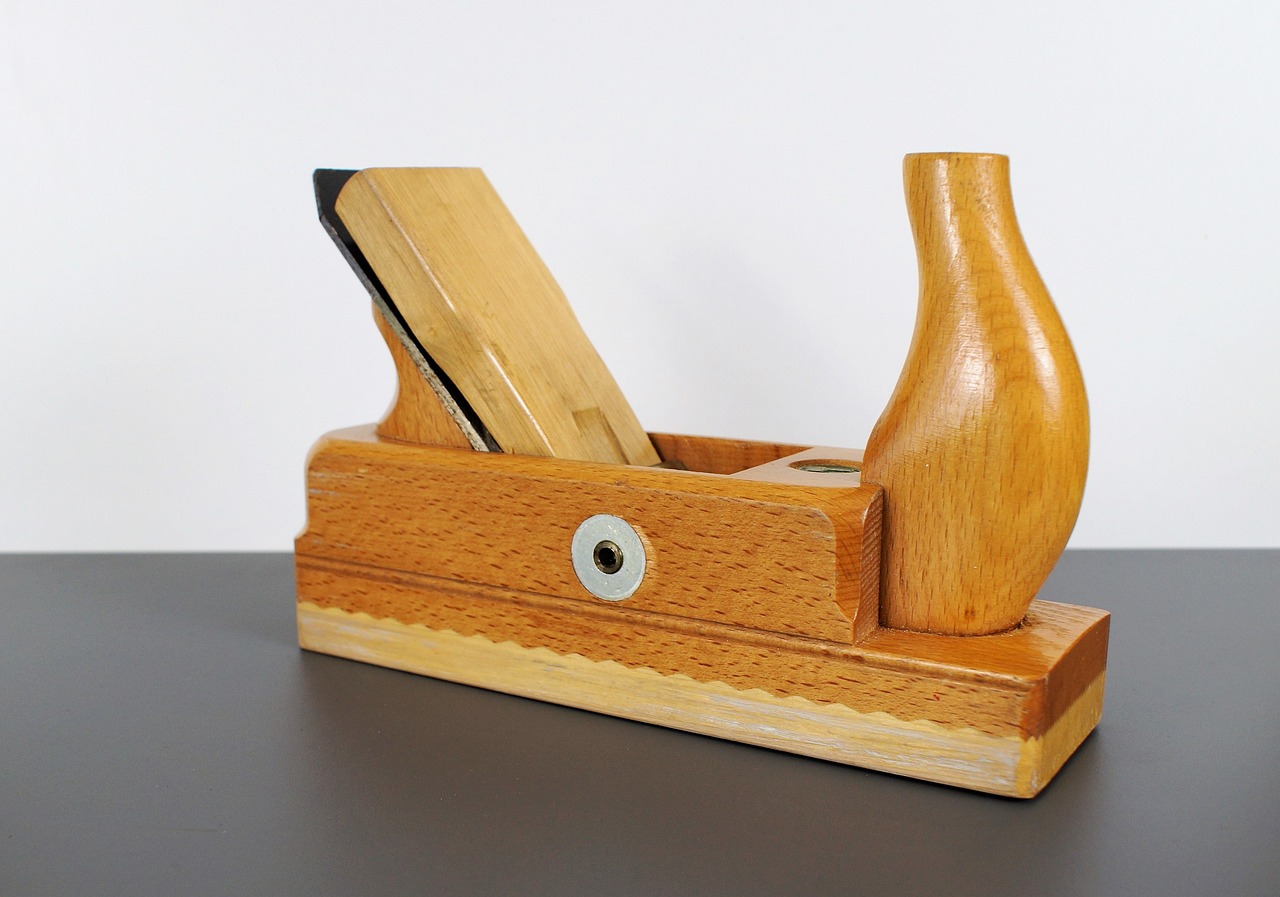Woodworking for Kids: Easy Projects and Crafts
Woodworking is not just a hobby; it's a gateway to creativity, learning, and fun for kids! Imagine your child transforming a simple piece of wood into something extraordinary, like a birdhouse or a toy car. Not only does this process spark their imagination, but it also builds essential skills that will benefit them throughout their lives. In this article, we will explore a variety of simple woodworking projects and crafts that are perfect for children. We’ll highlight the benefits of woodworking, share some safety tips, and present engaging projects that will inspire creativity and skill-building.
Engaging in woodworking offers numerous advantages for children. First and foremost, it significantly improves fine motor skills. As your child saws, hammers, or sands, they are developing hand-eye coordination and dexterity. Moreover, woodworking enhances creativity. When kids are given the freedom to design their projects, they learn to think outside the box and express themselves artistically. Furthermore, the focus required during these activities can lead to improved attention spans. Imagine a child completely engrossed in crafting a project, learning to concentrate deeply on a single task!
Additionally, woodworking fosters problem-solving abilities. Children often encounter challenges during their projects, like figuring out how to fit pieces together or what to do when things don’t go as planned. Overcoming these obstacles boosts their self-confidence as they witness their creations come to life. In essence, woodworking is a hands-on experience that combines fun with valuable life skills.
Understanding the basic tools used in woodworking is crucial for kids. Familiarizing them with child-friendly tools not only makes the process safer but also more enjoyable. Here are some essential tools that can help young woodworkers embark on their creative journey:
- Saws: Simple hand saws are perfect for beginners.
- Hammers: Lightweight hammers are easier for small hands to manage.
- Screwdrivers: A set of child-sized screwdrivers can help with assembling projects.
Safety precautions are paramount when introducing these tools. Always supervise children closely and ensure they understand how to use each tool correctly. This not only enhances their learning experience but also ensures they can enjoy their woodworking adventures safely.
Hand tools are a fantastic introduction to woodworking for kids. They are generally safer and easier to manage, making them ideal for young learners. Essential hand tools include saws, hammers, and screwdrivers. When using these tools, it's important to emphasize safe usage. For instance, always remind children to keep their fingers away from the blade when sawing and to wear protective eyewear when necessary. Developing these basic woodworking skills through hands-on experience with hand tools lays a strong foundation for future projects.
While power tools can seem intimidating, some are suitable for older children under close supervision. Tools like a small drill or a jigsaw can be introduced as kids grow more confident in their abilities. It’s crucial to explain the functions of these tools and the safety measures that must be followed. Always ensure that children are wearing appropriate safety gear, such as goggles and ear protection, when using power tools. With the right guidance, power tools can add an exciting dimension to your child’s woodworking projects!
Teaching kids about tool maintenance is vital for both safety and longevity. Kids should learn how to care for their tools, including cleaning them after use, sharpening blades, and storing them properly. This not only fosters a sense of responsibility but also ensures that the tools remain in good condition for future projects. By instilling these habits early on, children will develop a respect for their tools and a better understanding of how to use them effectively.
Safety is paramount in woodworking. Here are some essential safety tips to keep in mind:
- Always wear appropriate protective gear, like goggles and gloves.
- Keep the workspace organized to avoid accidents.
- Supervise children closely when using tools.
By following these guidelines, children can enjoy their woodworking projects without unnecessary risks, allowing them to focus on creativity and skill development.
This section presents a variety of easy woodworking projects suitable for kids. Each project is designed to be fun and educational, helping children build their skills while creating something they can be proud of. One of the most popular projects is building birdhouses. Not only do they provide a home for our feathered friends, but they also allow kids to express their creativity through paint and design.
Building birdhouses is a classic woodworking project for kids. The process can be broken down into simple steps, making it accessible for beginners. Here’s how to get started:
1. Gather materials: wood, nails, paint, and brushes. 2. Cut the wood into pieces: a base, walls, and a roof. 3. Assemble the pieces using nails or screws. 4. Decorate the birdhouse with paint or other materials. 5. Find a suitable spot to hang it outside!
Encourage kids to personalize their birdhouses with unique designs and colors. This project not only promotes creativity but also fosters a connection with nature.
Creating wooden toys can be a delightful experience for children. Projects like toy cars or puzzles can be simple yet engaging. For instance, kids can design their own toy car by cutting out the shape from a piece of wood, sanding it down, and painting it in their favorite colors. The satisfaction of crafting a toy that they can actually play with is incredibly rewarding. Not only do these projects promote imaginative play, but they also encourage learning through hands-on experience.
Here are some common questions parents may have about woodworking for kids:
- What age is appropriate for kids to start woodworking? Many children can begin simple woodworking projects as young as 5 or 6, with proper supervision.
- What tools should I start with? Basic hand tools like saws, hammers, and screwdrivers are great for beginners.
- How can I ensure safety while woodworking? Always supervise children, provide protective gear, and keep the workspace organized.
Woodworking is a rewarding activity that can ignite a passion for creativity and skill-building in children. So grab those tools, gather your materials, and let the woodworking adventures begin!

Benefits of Woodworking for Kids
Woodworking is not just about creating beautiful pieces of art or functional items; it’s a fantastic way for kids to develop essential skills while having a blast! Imagine your child, covered in sawdust, proudly holding up their first birdhouse or toy car. It’s not just a project; it’s a journey that enriches their mind and spirit. Here are some of the significant benefits that woodworking brings to the table:
First and foremost, woodworking significantly improves fine motor skills. As children grasp tools, measure wood, and manipulate small pieces, they’re honing their dexterity. Think of it as a workout for their hands! These skills are crucial not only for woodworking but also for everyday tasks like writing, buttoning shirts, or even playing musical instruments.
Another fantastic benefit is the boost in creativity. Woodworking allows kids to express themselves in ways they might not have experienced before. When they design their projects, they engage in a form of storytelling—each cut and carve adds a chapter to their unique creation. This creative process can ignite a passion for art and design that lasts a lifetime.
Moreover, woodworking enhances focus and concentration. In our fast-paced world filled with distractions, sitting down with a piece of wood and a few tools teaches kids the value of patience and persistence. They learn to follow instructions, visualize the end product, and work steadily towards completion. It’s like a meditation session wrapped in fun!
Let’s not forget about the problem-solving skills that woodworking nurtures. When things don’t go as planned—like a piece of wood splintering or a measurement being off—kids learn to think on their feet. They’ll brainstorm solutions, adapt their plans, and discover that mistakes are simply stepping stones to success. This resilience is invaluable as they grow and face challenges in life.
Finally, the sense of accomplishment that comes from completing a woodworking project is unparalleled. Kids experience a surge of self-confidence as they see their ideas transformed into tangible creations. This feeling of pride can motivate them to take on new challenges, both in woodworking and other areas of their lives. It’s like planting a seed of self-belief that will flourish as they grow!
In summary, woodworking offers a treasure trove of benefits for children. It’s not just about making things; it’s about building skills, confidence, and a love for creativity that can last a lifetime. So, why not get those little hands busy and let them explore the world of woodworking?

Essential Tools for Young Woodworkers
When it comes to woodworking, having the right tools is crucial for young woodworkers to ensure a safe and enjoyable experience. Understanding the basic tools used in woodworking not only enhances the learning process but also empowers children to express their creativity and build confidence. A well-equipped workspace can make a world of difference, transforming simple projects into exciting adventures!
For young woodworkers, the tools can be divided into two main categories: hand tools and power tools. Each category offers unique advantages and challenges. Hand tools are generally more approachable for beginners, allowing them to develop essential skills without the intimidation factor of power tools. On the other hand, power tools can introduce older children to advanced techniques, but they should always be used under adult supervision.
Hand tools are often the first step into the world of woodworking for kids. Tools like saws, hammers, and screwdrivers are not only user-friendly but also help children learn the basics of crafting. For example, a simple hand saw can teach them how to make straight cuts, while a hammer can introduce the concept of joining pieces together. It's essential to emphasize the safe usage of these tools, ensuring that kids understand the importance of handling them with care. Here’s a quick look at some essential hand tools:
| Tool | Use | Safety Tips |
|---|---|---|
| Saw | Cutting wood | Always cut away from your body. |
| Hammer | Nailing pieces together | Use a firm grip and keep fingers clear. |
| Screwdriver | Driving screws | Ensure the screwdriver fits the screw head properly. |
While power tools can seem daunting, they can also be incredibly useful for older children who are ready to take on more complex projects. Tools like drills and jigsaws can open up a new world of creativity and precision. However, it’s vital to remember that these tools require a higher level of responsibility and should only be used with close supervision. Teaching kids about the functions of these tools and the necessary safety measures can help them gain confidence in their woodworking abilities.
Another important aspect of woodworking is tool maintenance. Teaching kids how to care for their tools fosters a sense of responsibility and ensures that the tools remain in good working condition. Simple tasks like cleaning, sharpening, and proper storage can be integrated into their woodworking routine. For instance, after each project, encourage them to wipe down their tools and store them safely. This not only prolongs the life of the tools but also instills a sense of pride in their workspace.
Safety is paramount in woodworking, especially for children. Establishing a safe environment is essential to allow young woodworkers to enjoy their projects without unnecessary risks. Basic safety tips include wearing appropriate attire, such as closed-toe shoes and safety goggles, and keeping the workspace organized to prevent accidents. Always supervise children while they are using tools, and encourage them to ask questions if they are unsure about something. By prioritizing safety, we can create a fun and educational woodworking experience for kids!

Hand Tools
When it comes to woodworking, are the perfect starting point for kids. They are not only easy to use but also help children develop essential skills while having fun. Imagine your child gripping a small saw, carefully cutting through a piece of wood, and feeling a surge of pride as they see their creation take shape. It's a beautiful blend of creativity and skill-building!
Some of the most essential hand tools include saws, hammers, and screwdrivers. Each of these tools plays a vital role in woodworking projects and can be safely used by children with proper guidance. For instance, a small hand saw is great for making straight cuts, while a hammer is perfect for driving nails into wood. The screwdriver, on the other hand, is essential for assembling pieces together. With these tools, kids can learn the basics of construction and gain a sense of accomplishment as they complete their projects.
However, safety is key when introducing hand tools to young woodworkers. Always ensure that children wear appropriate safety gear, such as goggles and gloves, to protect themselves from any potential accidents. Additionally, supervising them closely while they work is crucial. You want to be there to guide them, ensuring they use the tools correctly and safely. Teaching them about the proper handling of each tool will not only keep them safe but also instill a sense of responsibility.
Here’s a quick overview of some essential hand tools and their uses:
| Tool | Use |
|---|---|
| Hand Saw | Cutting wood into desired shapes and sizes. |
| Hammer | Driving nails into wood or removing them. |
| Screwdriver | Assembling wood pieces with screws. |
| Wood Chisel | Carving and shaping wood. |
Encouraging your child to experiment with these tools will not only enhance their woodworking skills but also boost their confidence as they master each one. Remember, woodworking is all about patience and practice. With every project, they’ll become more adept and creative, transforming simple pieces of wood into unique masterpieces. So, let your child’s imagination run wild as they embark on their woodworking journey!
Q1: What age is appropriate for children to start woodworking?
A1: Generally, children as young as 5 can start with simple projects under supervision. As they grow older and more skilled, they can take on more complex tasks.
Q2: Are there specific hand tools designed for kids?
A2: Yes, many manufacturers produce child-sized hand tools that are safer and easier for kids to handle, making woodworking more accessible.
Q3: How can I ensure my child is safe while woodworking?
A3: Always supervise your child, teach them about tool safety, have them wear protective gear, and create a safe workspace free from distractions.

Power Tools
When it comes to woodworking, the thought of using can be both exciting and intimidating for kids. However, with the right guidance and supervision, these tools can open up a world of possibilities for young woodworkers. Power tools can help them achieve more complex projects, allowing them to explore their creativity in ways that hand tools might not. It's important to remember that safety comes first, and introducing power tools should be done gradually, ensuring that children understand how to use them properly.
Some age-appropriate power tools can be fantastic additions to a young woodworker's toolkit. These tools not only enhance the quality of their work but also build confidence as they learn to operate them. Here are a few power tools that can be suitable for older children under adult supervision:
- Drill/Driver: This versatile tool is perfect for drilling holes and driving screws. Kids can use it to assemble their projects, making it a great starting point.
- Jigsaw: A jigsaw allows for intricate cuts and shapes, letting kids get creative with their designs. It's ideal for making curves and patterns in wood.
- Orbital Sander: This tool helps smooth out surfaces, giving their projects a professional finish. It's easy to use and can be a fun way for kids to see their hard work pay off.
While these tools can be incredibly useful, proper safety measures are crucial. Here are a few key points to keep in mind:
| Power Tool | Safety Measures |
|---|---|
| Drill/Driver | Always wear safety goggles, keep hair tied back, and ensure hands are clear of the drill bit. |
| Jigsaw | Use both hands to control the tool, and never reach around the blade while cutting. |
| Orbital Sander | Wear a dust mask to avoid inhaling particles and keep hands clear of the sanding pad. |
It's also essential to teach kids about the importance of workspace organization. A clutter-free area reduces the risk of accidents and helps them focus on their tasks. Encourage them to clean up after each use and to store tools safely. By instilling these habits early on, you're not only promoting a safe working environment but also teaching them responsibility.
In summary, power tools can significantly enhance the woodworking experience for children, transforming simple projects into extraordinary creations. With the right tools, safety precautions, and guidance, kids can embark on a journey of creativity and skill development that will last a lifetime.

Tool Maintenance
When it comes to woodworking, maintaining tools is just as important as using them. Imagine trying to build a birdhouse with a dull saw or a rusty hammer; it would be like trying to run a race with a flat tire! Teaching kids how to care for their tools not only ensures safety but also instills a sense of responsibility and pride in their work. Proper maintenance includes several key practices that every young woodworker should learn.
First and foremost, cleaning tools after each use is essential. Sawdust and wood shavings can accumulate quickly, leading to rust and other damage if not addressed. Kids should be encouraged to wipe down their tools with a soft cloth and, if necessary, a little bit of oil to keep them in tip-top shape. This simple act can prolong the life of their tools and make them safer to use.
Next up is sharpening. A sharp blade is not only more efficient but also safer, as it requires less force to cut through wood. Kids can learn how to use a sharpening stone or file under supervision, ensuring they understand the proper technique. It's an excellent opportunity for them to develop fine motor skills while also learning about the importance of tool effectiveness.
Lastly, proper storage is crucial. Tools should be kept in a designated area, such as a toolbox or pegboard, to prevent them from getting lost or damaged. Teaching children how to organize their tools can be a fun activity in itself! They can even create labels for their tool storage, which adds a personal touch to their workspace.
To summarize, here are the key points for tool maintenance:
- Clean tools after each use to prevent rust and damage.
- Sharpen blades regularly to maintain efficiency and safety.
- Store tools properly to keep them organized and in good condition.
By incorporating these maintenance habits into their woodworking routine, kids will not only learn how to take care of their tools but also develop a deeper appreciation for the craft itself. After all, a well-maintained tool is like a trusty friend—it’s always ready to help you create something amazing!
Q: What tools are best for beginners?
A: For beginners, hand tools such as saws, hammers, and screwdrivers are ideal. They are easier to control and help develop basic skills.
Q: At what age can children start woodworking?
A: Children can start woodworking as young as 5 or 6 years old, with supervision and appropriate tools. Always consider the child's maturity and ability to follow safety instructions.
Q: How can I ensure my child is safe while woodworking?
A: Always supervise your child during woodworking projects, ensure they wear safety gear, and teach them about the proper use of tools.
Q: What are some easy projects for kids?
A: Simple projects like birdhouses, wooden toys, and picture frames are great for beginners and can be completed with minimal tools.

Safety Tips for Young Woodworkers
When it comes to woodworking, safety should always be the top priority, especially for young woodworkers who are just starting to explore this exciting craft. Understanding the importance of safety not only protects children from accidents but also instills a sense of responsibility and awareness. First and foremost, proper attire is essential. Kids should wear snug-fitting clothing to avoid any loose fabric getting caught in tools. Closed-toe shoes are a must, and it’s advisable to avoid wearing jewelry that could pose a risk while working.
Equally important is the organization of the workspace. A cluttered area can lead to accidents, so it’s crucial to keep the work environment tidy. Teach your child to always put tools back in their designated places after use. This habit not only ensures safety but also helps them develop a sense of order and responsibility. Moreover, it’s vital to establish a clear understanding of the workspace boundaries. Children should know where they can safely work and where they should not venture, especially when power tools are in use.
Supervision is another critical aspect of woodworking safety. Young woodworkers should always have an adult present, particularly when using power tools. An experienced adult can provide guidance, demonstrate proper techniques, and intervene if necessary. This not only helps in preventing accidents but also allows children to ask questions and learn the right way to handle tools.
Additionally, it’s essential to educate kids about the specific safety measures associated with each tool they will be using. For example, when using saws, they should be taught to keep their fingers away from the blade and to always cut away from their body. When hammering, they should learn to hold the wood firmly in place and keep their hands clear of the striking area. Understanding these precautions helps children develop a safety-first mindset.
Lastly, always have a first aid kit readily available in the workshop. Accidents can happen, and being prepared can make all the difference. Ensure that your child knows how to access it and understands basic first aid procedures. By fostering a culture of safety and preparedness, you’re not only protecting your young woodworkers but also empowering them to enjoy their woodworking experience with confidence.
Q: What age is appropriate for kids to start woodworking?
A: Children can start woodworking as early as age 5 or 6 with simple projects and supervision. As they grow older and gain more skills, they can tackle more complex tasks.
Q: What tools are safe for kids to use?
A: Hand tools like hammers, screwdrivers, and hand saws are generally safe for younger children. Older kids can be introduced to power tools under strict adult supervision.
Q: How can I ensure my child is safe while woodworking?
A: Always supervise your child, teach them about proper tool usage, ensure they wear appropriate safety gear, and maintain a clean and organized workspace.
Q: Are there any woodworking projects suitable for beginners?
A: Yes! Projects like birdhouses, simple wooden toys, and picture frames are great for beginners and can help build confidence and skills.

Simple Woodworking Projects for Beginners
When it comes to woodworking, starting with simple projects can ignite a child's passion for creating. These beginner-friendly projects not only offer a hands-on experience but also serve as a fantastic way for kids to learn valuable skills while having fun. Imagine the look on their faces when they see their very own creations come to life! Let's dive into some exciting woodworking projects that are perfect for young makers.
One of the most beloved projects for kids is building birdhouses. This classic task is not only enjoyable but also educational, as it connects children with nature. To make a birdhouse, kids will need some basic materials like wood boards, nails, and paint for decoration. The process can be broken down into simple steps:
| Step | Description |
|---|---|
| 1 | Gather materials: wood boards, nails, hammer, and paint. |
| 2 | Cut the wood into the necessary pieces (sides, bottom, roof). |
| 3 | Assemble the pieces using nails, ensuring everything is secure. |
| 4 | Paint and decorate the birdhouse to make it unique. |
| 5 | Find a suitable spot in the garden to hang the birdhouse. |
As kids work through these steps, they not only learn how to use tools but also grasp the concept of following instructions and problem-solving. Plus, once the birdhouse is completed, they can enjoy watching birds visit their creation!
Another fantastic project is crafting wooden toys. This can range from simple cars to more intricate puzzles. The beauty of making toys is that children can let their imagination run wild. For instance, they can design their very own race car or a puzzle that showcases their favorite animal. The materials needed for these projects are quite similar to those for the birdhouse, but with a focus on shapes and colors. Here’s a quick outline of how to create a wooden car:
1. Gather materials: wood block, wheels, axles, paint. 2. Cut the wood block into the shape of a car. 3. Drill holes for the axles and attach the wheels. 4. Paint the car in bright colors. 5. Let it dry and take it for a spin!
Creating wooden toys is not just about crafting; it also encourages imaginative play. Kids can create stories around their toys, enhancing their creativity and cognitive skills. Plus, the satisfaction of playing with something they've built themselves is truly priceless!
In addition to birdhouses and toys, kids can also explore other simple projects such as picture frames, plant holders, and simple stools. Each of these projects helps develop different skills, from measuring and cutting to assembling and finishing. The key is to keep the projects engaging and age-appropriate, ensuring that kids feel accomplished at the end of each endeavor.
Before diving into these projects, it’s essential to create a safe and organized workspace. This not only enhances the woodworking experience but also instills a sense of responsibility and care in young woodworkers. With the right tools, materials, and a bit of guidance, the world of woodworking can be a magical journey for kids. So, let’s get those little hands busy and watch as they transform simple pieces of wood into amazing creations!
Q: What age is appropriate for kids to start woodworking?
A: Kids as young as 5 can start with simple projects under supervision. As they grow older, they can tackle more complex tasks.
Q: What tools should I provide for my child?
A: Start with basic hand tools like a small hammer, saw, and screwdriver. Always prioritize safety and consider child-safe tools.
Q: How can I ensure my child's safety while woodworking?
A: Always supervise your child, ensure they wear appropriate safety gear, and teach them about safe tool usage and workspace organization.

Birdhouses
Building is not just a classic woodworking project; it's an exciting adventure that allows kids to connect with nature while honing their skills. Imagine the thrill of watching a bird find its new home, all thanks to your child's creativity and hard work! This project is perfect for children because it combines fun with learning, and the sense of accomplishment they feel when they finish their birdhouse is truly priceless.
To get started, gather the necessary materials. You'll need some basic supplies like wood boards, nails, wood glue, and paint. It’s essential to choose kid-friendly materials that are safe and easy to work with. Here’s a quick table to help you understand what you might need:
| Materials | Purpose |
|---|---|
| Wood Boards | Form the structure of the birdhouse |
| Nails | Secure the pieces together |
| Wood Glue | Provide extra support |
| Paint | Add color and personality |
Once you have your materials, the next step is to plan the design. Kids can get creative here! Encourage them to draw their birdhouse design on paper, incorporating unique features like a slanted roof, decorative paint, or even a little perch for the birds. This is where their imagination can really take flight! Remember, the more personal touches they add, the more special their birdhouse will become.
To make the construction process easier, here are some simple steps to follow:
- Cut the Wood: Using a saw, help your child cut the wood into the necessary pieces according to their design.
- Assemble the Walls: Start by nailing or gluing the walls together. Make sure they’re sturdy!
- Add the Roof: Attach the roof pieces securely, ensuring they are well-aligned.
- Paint and Decorate: Let your child unleash their creativity by painting and decorating the birdhouse.
- Find a Perfect Spot: Once completed, help them find a suitable place in the yard to hang or place their birdhouse.
Building a birdhouse is not just about the end product; it’s about the journey. As they work through the steps, kids will learn valuable lessons in patience, planning, and execution. Plus, they’ll gain a greater appreciation for nature as they watch birds come and go from their handcrafted homes. This project can spark conversations about different bird species and their habitats, making it an educational experience as well!
So, gather your tools, roll up your sleeves, and dive into this exciting woodworking project. Who knows? You might just inspire a lifelong love of crafting and nature in your child!
Q: What age is appropriate for kids to start woodworking?
A: Children as young as 5 can start with simple projects under supervision, while older kids can handle more complex tasks as they gain skills.
Q: How can I ensure safety while woodworking with my child?
A: Always supervise your child, ensure they wear safety gear, and teach them how to use tools properly. Start with hand tools before moving to power tools.
Q: What type of wood is best for birdhouses?
A: Untreated cedar or pine is ideal as it is durable and safe for birds. Avoid using treated wood, as it may contain harmful chemicals.

Wooden Toys
Creating can be a delightful experience for children, sparking their imagination and enhancing their creativity. Not only do these projects allow kids to engage in a hands-on activity, but they also result in unique, personalized toys that can provide hours of fun. Imagine the joy on a child's face when they see a car they built zooming across the floor or a puzzle they crafted coming together piece by piece. This sense of accomplishment not only boosts their confidence but also encourages them to explore their artistic side.
When it comes to designing wooden toys, the possibilities are virtually endless! Some popular and simple designs include:
- Wooden Cars: Easy to make and perfect for racing!
- Puzzles: Fun to assemble and can be customized with different shapes.
- Animal Figures: Kids can create their favorite animals to play with.
To get started on making wooden toys, you'll need a few basic materials and tools. Here’s a quick overview:
| Material | Purpose |
|---|---|
| Wood Blocks | Base material for building toys. |
| Sandpaper | To smooth out rough edges and surfaces. |
| Non-toxic Paint | For decorating and personalizing toys. |
| Wood Glue | To hold pieces together securely. |
Before diving into the actual construction, it’s important to plan out the design. Sketching a simple blueprint can help children visualize their project and understand the steps involved. For example, if they choose to make a wooden car, they might want to draw the shape, decide on the size, and think about how many wheels they want to add. This planning phase is crucial as it teaches kids about organization and forethought, skills that will benefit them in many areas of life.
Once the planning is done, it’s time for the fun part—building! Kids can start by cutting the wood into the desired shapes, which can be done with the help of an adult using safe tools. Then, they can sand the edges to ensure there are no splinters, making the toys safe for play. After that, the real creativity kicks in with painting and decorating! Encouraging children to express themselves through colors and designs helps them develop a sense of ownership over their creations.
In addition to being enjoyable, crafting wooden toys also has educational benefits. As children work on their projects, they learn about shapes, balance, and even basic physics principles as they figure out how to make their toys work. This hands-on learning experience is invaluable, as it reinforces concepts in a fun and engaging way.
So, whether it’s a simple wooden car or an intricate puzzle, creating wooden toys offers a fantastic opportunity for children to learn, create, and have fun. It’s a wonderful way to spend time together, fostering family bonds while instilling a sense of accomplishment in young woodworkers. Plus, these homemade toys can become cherished keepsakes that remind kids of their creative adventures!
Q: What age is appropriate for children to start woodworking?
A: Children as young as 5 can start with simple hand tools under adult supervision. As they grow older and more skilled, they can progress to more complex projects and even power tools.
Q: Are there specific types of wood that are best for children's projects?
A: Softwoods like pine or cedar are excellent choices for beginners. They are easier to cut and shape, making them ideal for young woodworkers.
Q: How can I ensure safety while woodworking with my child?
A: Always supervise your child, ensure they wear safety goggles, and teach them about handling tools properly. Create a safe workspace by keeping it organized and free from distractions.
Frequently Asked Questions
-
What age is appropriate for kids to start woodworking?
Kids can start woodworking as early as 5 years old with simple projects and child-friendly tools. Always ensure that they are supervised, especially when using any tools. As they grow older, they can take on more complex projects.
-
What are some beginner-friendly woodworking projects for kids?
Some great beginner projects include building a birdhouse, creating simple wooden toys like cars or puzzles, and making picture frames. These projects are not only fun but also help kids develop essential skills.
-
What tools do I need for kids to start woodworking?
For young woodworkers, basic hand tools like kid-sized saws, hammers, screwdrivers, and sandpaper are essential. As they gain experience, you can introduce them to power tools under strict supervision.
-
How can I ensure safety while kids are woodworking?
Safety is crucial! Make sure kids wear protective gear like goggles and gloves, keep the workspace organized, and always supervise them while they work. Teaching them about tool safety is equally important.
-
What are the benefits of woodworking for children?
Woodworking helps improve fine motor skills, boosts creativity, and enhances focus. It also fosters problem-solving abilities and builds self-confidence as kids see their projects come to life!
-
Can woodworking help with my child's education?
Absolutely! Woodworking encourages hands-on learning, which can reinforce concepts in math and science. It also promotes critical thinking and planning skills as kids design and execute their projects.
-
How do I maintain the tools used by kids?
Teaching kids about tool maintenance is key. Show them how to clean tools after use, keep them sharp, and store them properly. This instills a sense of responsibility and ensures tools last longer.
-
What materials are best for kids' woodworking projects?
Softwoods like pine or cedar are ideal for kids because they are easier to work with. They can also use recycled materials, like wooden pallets or scraps, to create unique projects while being eco-friendly!


















